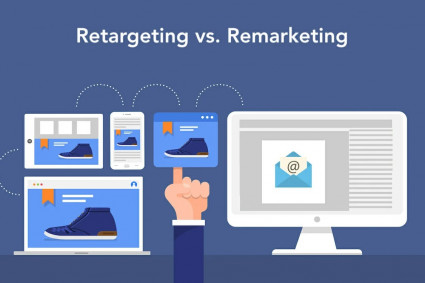When Google officially began shifting businesses from Universal Analytics to Google Analytics 4 (GA4), the digital marketing community braced itself for a new era in data collection. For some, GA4 represented innovation—an event-driven model designed for a world where privacy, multi-device behaviour, and AI-driven insights dominate the conversation. But for many others, GA4 has felt less like a leap forward and more like a rocky adjustment, filled with frustrations and steep learning curves.
If you run an online business, whether it is a growing e-commerce brand, a chain of restaurants, or even a boutique that relies on SEO services in Sri Lanka to boost visibility, you have probably noticed that GA4 does not always deliver what you need in a straightforward way. For hotels experimenting with digital campaigns—say, those dabbling in hotels SEO to capture more direct bookings—the gaps in GA4 become even more glaring.
To put it simply, while GA4 is undeniably powerful, it is not perfect. And understanding its limitations is just as important as recognising its strengths.
The Steep Learning Curve
One of the most common complaints about GA4 is that it does not feel intuitive, especially for long-time Universal Analytics users. With Universal Analytics, most marketers knew where to find their standard reports—sessions, bounce rate, pageviews, conversions. GA4, on the other hand, flips the model on its head. It is not about sessions anymore; it is about events. And while this makes sense in theory—because today’s user journey is fragmented across devices and touchpoints—it is a big shift in practice.
This learning curve is not just a matter of “getting used to a new dashboard.” It requires retraining teams, rethinking strategy, and in many cases, rebuilding entire reporting systems from scratch. For businesses relying on professional web designers in Sri Lanka or marketing teams stretched thin, the added complexity can feel like a burden rather than an upgrade.
Customisation: A Double-Edged Sword
GA4 boasts an impressive ability to customise reports. You can build explorations, create funnels, and dig deep into user paths. But with great flexibility comes great responsibility—and frustration. Unlike Universal Analytics, which had plenty of ready-to-use reports out of the box, GA4 expects you to create your own.
This makes GA4 ideal for advanced analysts who love getting into the weeds. But for small businesses or teams without a data scientist on hand, it often results in hours of trial and error. Imagine a hotel marketing team trying to analyse the effectiveness of a Facebook campaign on room bookings—they now need to configure custom events, adjust parameters, and then manually create a funnel to see results. It is not plug-and-play anymore.
Historical Data Limitations
Another drawback that hits businesses hard is the handling of historical data. Universal Analytics allowed users to store and analyse data across years, creating a rich, long-term picture of performance. GA4, however, only stores standard data for 14 months unless you adjust settings, and even then, it is not the same as Universal’s open-ended approach.
This is particularly challenging for industries with seasonal cycles. Take the tourism sector, for example. Hotels may want to compare traffic and booking data from this year’s holiday season to the same period three years ago. With GA4, unless you have exported data or built external solutions, you are working with a limited window. That historical perspective, so crucial for spotting long-term trends, simply is not built in.
Missing Familiar Metrics
Marketers loved Universal Analytics for its straightforward metrics: bounce rate, average session duration, pageviews. GA4, in its quest to modernise measurement, deprioritised many of these familiar metrics or redefined them in ways that confuse users.
Bounce rate, for example, was initially removed, only to be added back later under a new definition. Session counts do not align perfectly with Universal Analytics, leading to discrepancies in reports. This lack of continuity makes it harder for businesses to transition smoothly, especially those who depend on consistent KPIs to communicate results to stakeholders.
Integration Challenges
GA4 does integrate with other Google tools like BigQuery, but not everything works seamlessly—yet. Third-party tools that used to connect easily with Universal Analytics sometimes struggle with GA4’s new event-based model. For companies that rely heavily on automation, dashboards, or third-party analytics platforms, this creates bottlenecks.
Think of a digital agency offering a link building service as part of its SEO package. If their reporting tool has not fully caught up with GA4’s structure, it could take weeks—or months—before they can deliver the kind of transparent reporting clients expect. In competitive industries, that lag can cost business.
The Privacy Trade-Off
One of GA4’s biggest selling points is its alignment with a privacy-first internet. With cookies on their way out and data protection laws getting stricter, GA4’s event-driven model is meant to future-proof analytics. However, this also means that certain data points are harder to capture.
Marketers often find themselves with less visibility into user behaviour, particularly when it comes to attribution. Multi-channel attribution reporting, which should theoretically be GA4’s strength, often feels incomplete or inconsistent. As a result, businesses are left guessing which campaigns truly deserve credit for conversions.
User Experience vs. Analyst Experience
Another subtle drawback lies in the balance between user experience and analyst experience. GA4 feels designed for Google’s vision of the future of data, not necessarily for the day-to-day needs of small to mid-sized businesses.
Large corporations with data engineering teams may thrive in GA4’s environment. But a local business—say, a boutique hotel trying to understand if their latest Instagram campaign brought in new customers—may struggle to extract meaningful insights without external support. This gap widens the divide between businesses with resources and those without.
Export Dependence
Because of the data retention limits and the complexity of reporting, many businesses find themselves increasingly dependent on external tools like BigQuery, Google Data Studio, or third-party software. While these tools can unlock powerful insights, they add costs and require specialised knowledge.
For a lean business operating in Sri Lanka, balancing budgets between advertising, website maintenance, and analytics can be tough. Being forced to depend on external exports just to make sense of your data feels like an unnecessary hurdle.
The Bigger Picture
None of this is to say GA4 is inherently “bad.” On the contrary, it represents a significant step toward the future of digital analytics. But its current limitations highlight a mismatch between Google’s ambitions and the immediate realities businesses face.
Small and medium businesses often do not have the luxury of data analysts on staff. They want clear, simple reports that tell them: “This campaign worked. This one did not. Here is how many people booked a room, bought a product, or filled out a form.” GA4 can deliver those answers, but only after customisation, setup, and ongoing adjustments.
Moving Forward
So, what is the solution? For now, patience and preparation are key. Businesses should invest time in training their teams, exploring GA4’s features, and considering how to integrate external tools where needed. Agencies providing SEO services, web development, and digital marketing must adapt quickly, guiding clients through the maze that GA4 often presents.
The transition may feel daunting, but it also opens opportunities for innovation. Those who master GA4 early will gain a competitive edge, understanding customers in ways that others cannot.
Still, it is fair to acknowledge the frustrations. GA4 has drawbacks and limitations that make life harder for marketers and business owners. And until Google refines the platform further, the best approach is to balance learning its capabilities with building practical systems that meet your business’s unique needs.
Final Thoughts
Google Analytics 4 is not the clean, user-friendly tool that Universal Analytics once was. It is complex, sometimes clunky, and often feels like it was designed for analysts rather than everyday marketers. But it is also powerful, adaptable, and positioned for the future.
For now, recognising its shortcomings—be it the learning curve, data limitations, or missing integrations—can help businesses plan better. And whether you are running a hotel campaign, working with professional web designers, or scaling an agency that offers a link building service, one thing is clear: GA4 may be the future, but navigating it requires more effort than we might have hoped.







